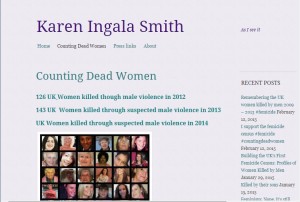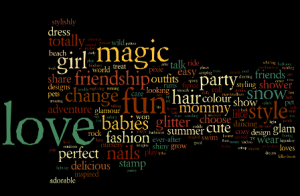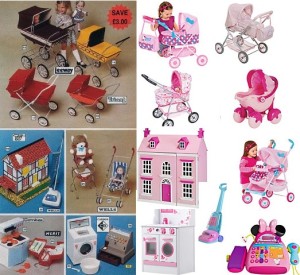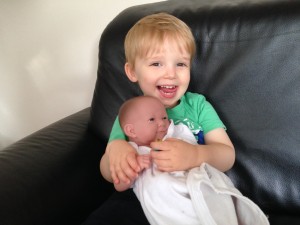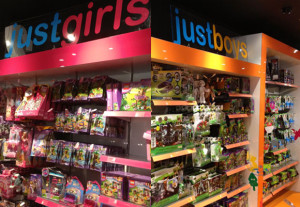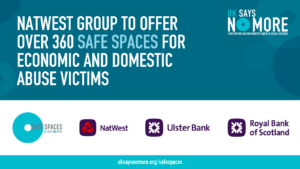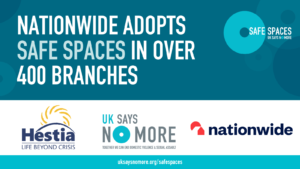Blog reposted with the permission of Tricia Lowther, campaigner at Let Toys Be Toys. Originally posted on February 14th 2015 for V Day – an international movement to end violence against women and girls.
Let Toys Be Toys campaigner Tricia Lowther explains why she feels that countering stereotypes, and looking at what we teach children about girls and boys, men and women, is a central part of countering gender-based violence.
Most of us can remember a favourite toy from our childhood, or a favourite book, or the things we liked to do, the games we liked to play with friends or family.
When I was a little girl I was a bookworm, I still am. I loved football, an interest that stayed with me into adulthood. And I loved animals, I still do. I’m a vegetarian – which is a choice I made as a child.
I’m telling you this because I think it helps to demonstrate something we all know – that childhood prepares the ground for adulthood. It’s generally accepted that gender identity is formed between the ages of 3 and 6 and this includes learning about gender roles and stereotypes. At this age we form deep seated beliefs and values that can stay with us throughout our lives. Some sociologists call the period from birth to age 7 ‘The Imprint Period’, because, they say; “Up to the age of 7, we are like sponges, absorbing everything around us and accepting much of it as true”.
It follows then, that when a society has a problem with violence, with male violence, it must be worth looking for the roots of that problem in the way that we bring up our children.
Last week I read a newspaper interview with Karen Ingala-Smith, founder of the Counting Dead Women project. Karen said that the criminal justice system should not be seen as the place where violence against women has to be tackled. “We could have the perfect police force”, she said, “but men would still attack women”.
She went on; “It’s deeper, right down in the way we raise our children, the girls dressed in pink and called princesses. Told by their parents that the boy hit them in the playground just because he secretly likes them. What sort of message is that? We need to send clear messages to boys and girls.”
Karen’s right – we do need to send clear messages to boys and girls. And Let Toys Be Toys was set up to challenge the messages that children get from the toy industry. Because toys are an important part of childhood and toy marketing has a big influence on children.
A couple of years ago, on a blog called The Achilles Effect, a study was made of the words used in toy adverts to children which were counted and compared. Two word clouds were created to show how boys and girls are spoken to by advertisers.
It shouldn’t surprise anyone to hear some of the words most commonly used in adverts that target boys: Battle, Power, Heroes, Weapons, Action, Attack. For girls common words are; Love, Friendship, style, hair, cute & babies.
- Words used in adverts aimed at girls – www.achilleseffect.com
- Words used in adverts aimed at boys – www.achilleseffect.com
These are the messages children get from media. In a society that has a problem with male violence, & a society in which cosmetic surgery has become normal for many young women, adverts for toys overwhelmingly promote the message; ‘boys, be tough’, ‘girls, be cute’.
Words used in adverts aimed at girls – love, magic, babies, fashion, hair, party, nails, perfect, friendship
Children today are bombarded with media messages at a rate we’ve never seen before. And despite progression in equality laws for adults, research has shown that toys are more divided now by gender than they were fifty years ago.
It’s not just toys, it’s the entire culture of childhood; films, tv shows, computer games, clothes, books and toys are often all about the same characters -the superheroes and the princesses that are all targeted either at boys or at girls.
It can be very difficult to find a middle ground. Boys and girls are often presented as completely different creatures, alien to one another, never playing together. This is despite the fact that neurological research shows more variation within genders than between them, despite the fact that boys and girls are more alike than different.
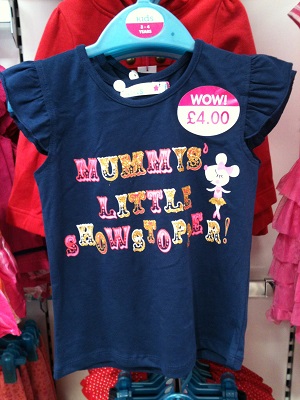 I had a quick look on a supermarket website so I could read out some of the slogans on tshirts available for toddlers today. In the boys section was stuff like: “Here Comes Trouble”, “Mr Mischief” & there was even one with a police style photo on the front that said “Wanted – Up To No Good. Reward given”.
I had a quick look on a supermarket website so I could read out some of the slogans on tshirts available for toddlers today. In the boys section was stuff like: “Here Comes Trouble”, “Mr Mischief” & there was even one with a police style photo on the front that said “Wanted – Up To No Good. Reward given”.
Girls of course get things like;”Adorable”, “Smile Sweetly and be happy”, and “Happy girls are the prettiest”.
This is the cultural wallpaper of childhood. Boys are expected to be naughty. Girls are encouraged to focus on appearance above all else.
In 2012 a group of 9 & 10 year old schoolboys were asked to list the things they didn’t like about being a boy, amongst the things they said, in a photograph that was shared around social media, were the following:
- Not supposed to cry
- Having an automatic bad reputation
- Supposed to like violence
I’m sure none of us would directly tell a boy that he’s meant to be naturally violent and emotionally repressed. But that’s what marketing is doing every day. And boys are getting the message.
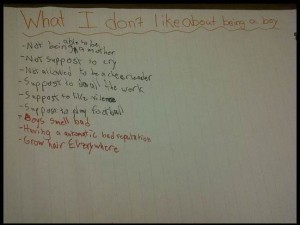 We asked parents to tell us things their children had said that show how they’ve been affected by gendered marketing. One of the comments we got was from a parent who had heard a 5yr old boy say to a 5yr old girl who was dressed as princess: “Boys HATE shoes and dresses and princesses!!!!”
We asked parents to tell us things their children had said that show how they’ve been affected by gendered marketing. One of the comments we got was from a parent who had heard a 5yr old boy say to a 5yr old girl who was dressed as princess: “Boys HATE shoes and dresses and princesses!!!!”
Another parent told us how her little boy loved the colour pink until he started nursery. She said; “Now, he is scared to go to the park wearing jewellery or nail varnish. He just says, ‘People will laugh at me”.
Boys today learn to steer clear of pink, if they want to avoid ridicule. This means that they steer clear of toys like dolls houses, arts & crafts sets or pushchairs that only a few years ago had a more universal appeal. It may seem like children today have a lot more stuff, but the reality of gendered marketing means that they can actually have a lot less real choice to explore their interests, than they did, fifty years ago.
Let Toys Be Toys are sometimes accused of trying to tell children what to play with, trying to force dolls on boys or take dolls away from girls, but this couldn’t be further from the truth. We set up as a reaction to the multi-national corporations that tell our children every day, what to play with, what to be interested in, how to behave, how to view themselves and their potential future selves.
We just want children to have real choice.
There’s nothing wrong with a girl liking pink or fashion, or cars, but something has gone wrong when a 6 year old girl says she doesn’t want anyone to know that she likes cars.
There’s nothing wrong with a boy who likes trucks, or football, or dolls – but something has gone wrong when a 10 year old boys admits that he had always wanted a dolls house but had been too scared to ask for one.
When we teach boys to scorn toys, colours and activities associated with girls, we teach them to scorn girls and boys who scorn girls may well grow up to be men who scorn women. Children grow up quickly. What will the little boy who says he hates princesses be saying in ten years time?
If we want girls and boys to be valued equally and to respect each other, surely they need to be brought together, not pushed apart? If we want to achieve equal pay, mightn’t it be an idea to start with equal play? And that doesn’t mean giving every child the same thing, it just means paying attention to the child, their interests, their personality, & not make decisions based purely on gender, because knowing someone’s gender does not mean you know what they are interested in.
If we want to achieve equal pay, mightn’t it be an idea to start with equal play?
We need to offer children equal choices right from the start, so they grow up expecting, and demanding, equal rights.
If we want a society in which men are emotionally literate, don’t we need to start in childhood, by challenging limiting stereotypes about boys? Because when we limit children’s options, we limit their ideas about who they can be and what they can do in life. And we also give them limiting ideas about each other.
Let Toys Be Toys sets out to change the culture that pressures children to conform to ideas of gender that they often do not fit and often are not in their best interests. We want every child to have the freedom to express themselves, whoever that self may be.
Signage in Center Parcs toyshops has now been changed following our campaign. We’ve persuaded 14 major UK retailers and 8 publishers to drop explicit boys and girls labelling from toy shelves, books and packaging, but just dropping the boys and girls labels is not enough. We want to see toys and books marketed in a way that includes every child, that allows them to discover where their true interests & talents lie. We want to make it commonly accepted that there is no such thing as a girls toy or a boys toy, there are just toys.
We want to make it commonly accepted that there is no such thing as a girls toy or a boys toy, there are just toys.
To support our campaign, please sign our petition asking retailers to take down ‘girls’ and ‘boys’ signs, or take a look at our resources for challenging stereotypes in school.
You can read the original post and find out more about Let Toys Be Toys campaign.
Interested in becoming a partner of UK SAYS NO MORE?
We’d love to hear from you, please get in touch with Lyndsey Dearlove, Violence Against Women and Girls (VAWG) Partnership Manager.
You can contact Lyndsey by email at Lyndsey.Dearlove@hestia.org or by phone at 020 7378 3170.
